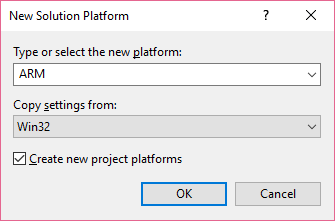

- OPENCL TUTORIAL DRIVER
- OPENCL TUTORIAL ANDROID
- OPENCL TUTORIAL SOFTWARE
- OPENCL TUTORIAL WINDOWS
As usual, you want to call the kernel with a lot of data. Loop through your copy of outVector and add to get your final sum. Call the kernel, read outVector back to the host. Determine the optimal work group size, and use this to calculate the size of 'resultScratch'. Create a work group for each compute unit you have on the device. Allocate memory for the input and output buffers. See this question for more info about passing in a local (NULL) parameter. The minimum LDS size defined by the openCL specification is 16kb. Switching to doubles will make it 512 bytes. For example, if you use 64 work items per group, this will be 64 floats = 256 bytes. expected size = sizeof(cl_float)*get_local_size(0). 
you need to allocate one float per work item in the group.
local float* resultScratch - local memory for each work group to use. const int inVectorSize - the total number of floats held by inVector. 
global float* outVector - a list of floats, one for each work group.global float* inVector - the source of floats to sum.I will debug the double problem I am having, and post an update. I am having trouble with doubles on my machine, but this kernel should work fine if you enable doubles and change 'float' to 'double' where you find it. I put together a kernel which will reduce your vector down to 10-30 or so values, which you can sum with your host program. This began as my initial foray into Vulkan, only to disappoint me that my hardware isn't supported.You mentioned your problem involves 60k doubles, which won't fit into local memory of your device. If not, it will give a hint as to why (missing drivers, malfunctioning drivers, incompatible drivers).
OPENCL TUTORIAL WINDOWS
This tiny program checks if your Windows system is capable of creating a Vulkan instance.By default this test profile is set to run at least 3 times but may increase if the standard deviation exceeds pre-defined defaults or other calculations deem. Based on data, the selected test / test configuration (Waifu2x-NCNN Vulkan 20200818 - Scale: 2x - Denoise: 3 - TAA: Yes) has an average run-time of 2 minutes.The CtsGraphicsTestCases module, which tests that the device is configured correctly for Vulkan capabilities it supports. OEMs can test their Vulkan implementation using CTS, which includes: Khronos Vulkan Conformance tests in the CtsDeqpTestCases module, which include functional API tests for Vulkan 1.0 and 1.1.The new API Overhead feature test lets you compare the performance of Vulkan and OpenGL ES.
OPENCL TUTORIAL ANDROID
Today we added a new Vulkan test to our 3DMark Android benchmarking app. OPENCL TUTORIAL SOFTWARE
Developed by the Khronos Group, the same consortium that developed OpenGL®, Vulkan™ is a descendant of AMD’s Mantle, inheriting a powerful low-overhead architecture that gives software developers complete access to the performance, efficiency, and capabilities of Radeon™ GPUs and multi-core CPUs. Ziggurat 2 (1080p) - GTX 1650 4GB GDDR6 - Vulkan test. Ziggurat 2 (1080p) - GTX 1650 4GB GDDR6 - Vulkan test. Join us in Munich on 27-29 April for the 8th International Workshop on OpenCL (IWOCL) and SYCLcon, the open-standard for heterogeneous computing using C++. OPENCL TUTORIAL DRIVER
The Radeon Vulkan driver now supports PRIME.
Note: On hybrid graphics (NVIDIA Optimus/AMD Dynamic Switchable Graphics): Vulkan is not currently officially supported by Bumblebee but does work with primus_vk or primus-vk-gitAUR. But wine must be built with Vulkan support enabled, and some official builds do not support Vulkan. DXVK works with wine 3.4, as well as with wine-staging 3.4 and with wine 3.5. Hopefully I will manage to test it with wine-3.5 this weekend. Didn't tried with wine-3.5, but according to the new Vulkan loader in wine-3.5, it should work.







 0 kommentar(er)
0 kommentar(er)
